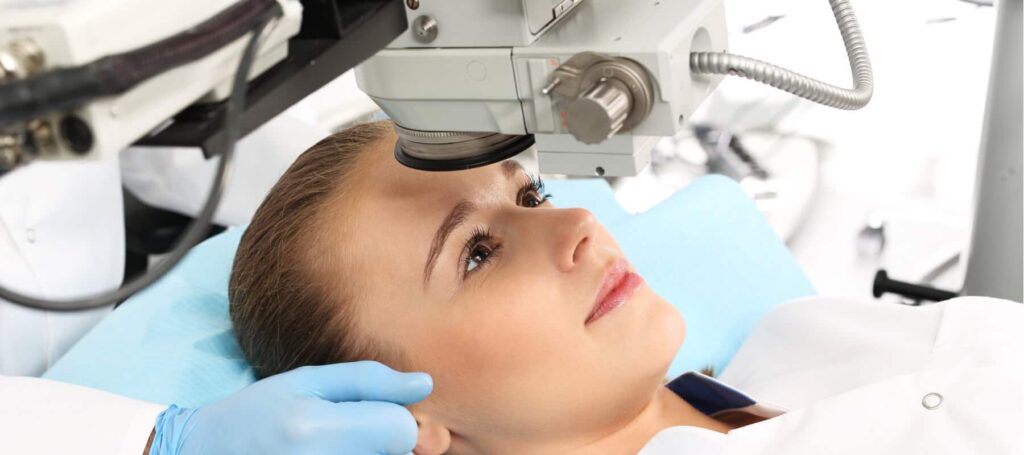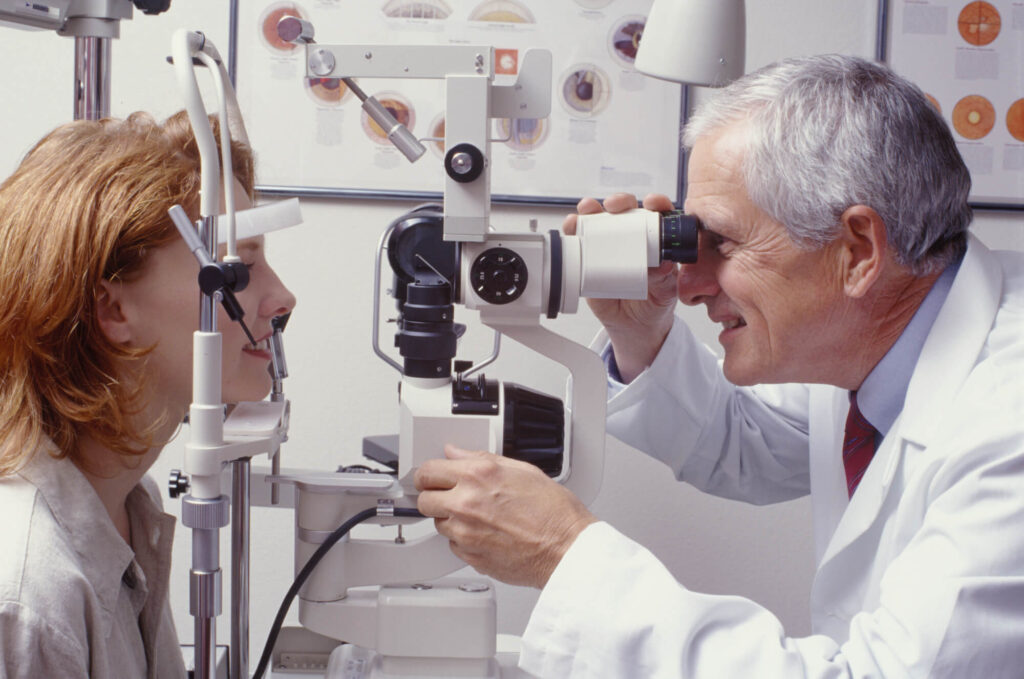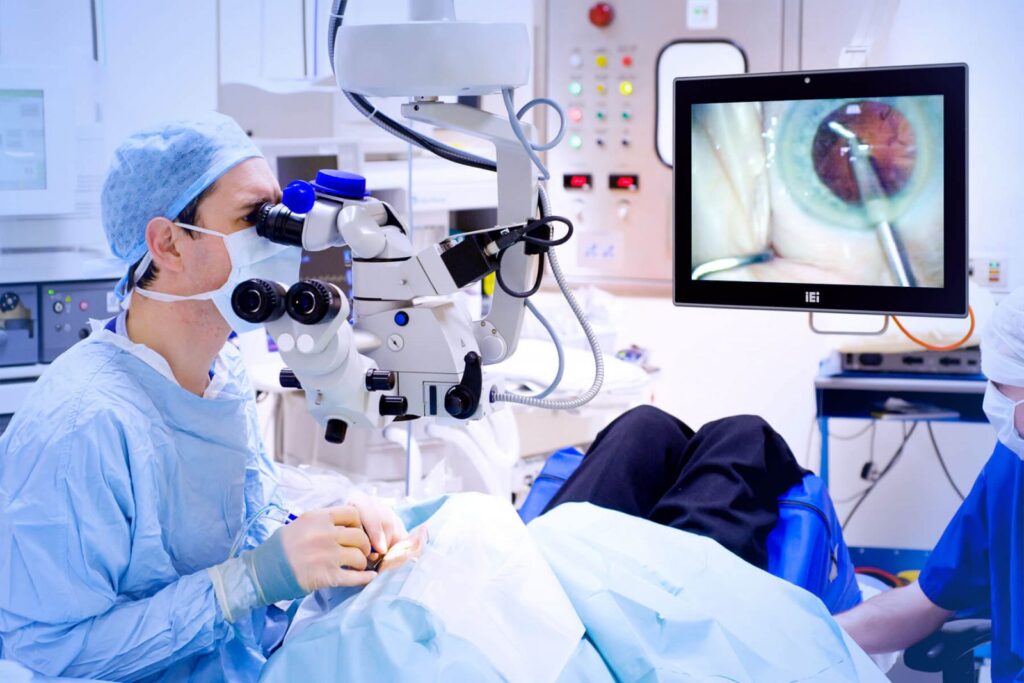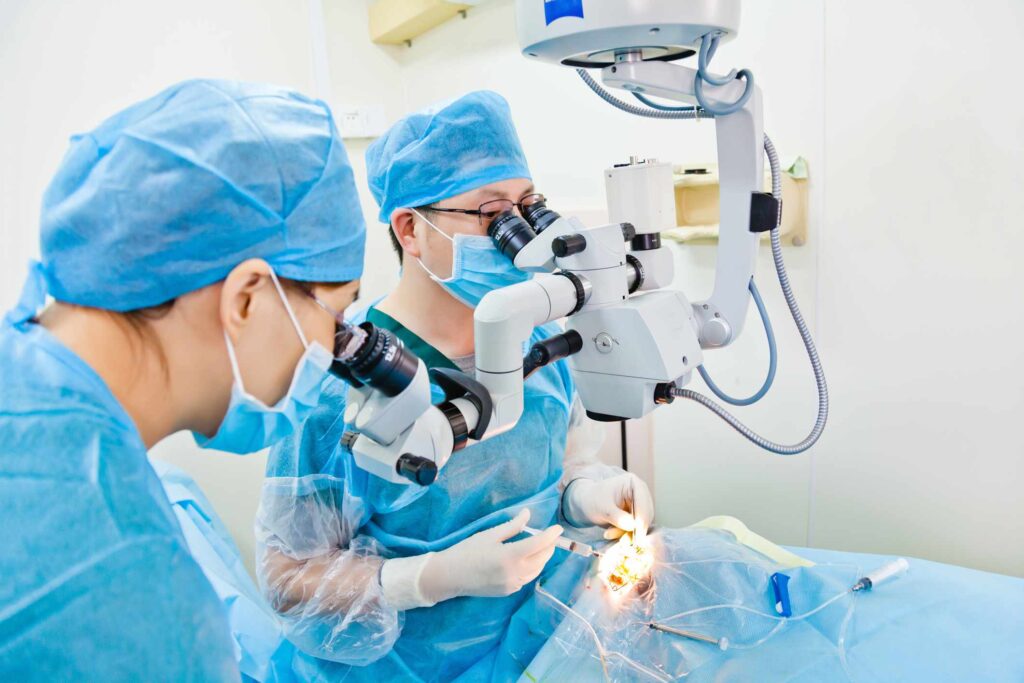In this comprehensive guide, we will delve into the world of cataract surgery, providing you with the knowledge and insights you need to make informed decisions about your eye health. Cataract surgery is a common procedure performed by leading experts to remove cataracts and restore clear vision. Whether you are considering cataract surgery or have recently undergone the procedure, this guide will cover everything you need to know.
Understanding Cataract Surgery
At its core, cataract eye surgery is a surgical procedure that aims to remove the clouded lens of the eye, known as a cataract, and replace it with an artificial lens called an intraocular lens (IOL). By doing so, cataract surgery allows for clearer vision and improved quality of life.
What is Cataract Surgery?
Cataract surgery involves the removal of the natural lens of the eye, which has become cloudy, and replacing it with an IOL. During the procedure, a skilled surgeon will make a small incision in the cornea and use advanced techniques to break up the cataract into tiny fragments. These fragments are then gently removed, making way for the placement of the IOL.
But what happens after the cataract is removed? Well, the surgeon carefully positions the IOL in the same location where the natural lens used to be. This artificial lens is designed to restore clear vision and can be tailored to the patient’s specific needs. There are different types of IOLs available, including monofocal, multifocal, and toric lenses, each offering unique benefits.
Cataract surgery is typically an outpatient procedure performed under local anesthesia. This means that you will be awake but numbed in the surgical area. However, sedatives may be given to help you relax during the procedure. The surgery itself usually takes less than an hour, and most patients experience minimal discomfort.

The Importance of Early Detection and Treatment
Early detection and treatment of cataracts are crucial for maintaining good eye health. Cataracts are a natural part of the aging process and are commonly found in individuals over the age of 60. However, cataracts can also develop as a result of certain medications, trauma to the eye, or underlying health conditions.
Regular eye exams are essential for detecting cataracts early on. Your eye care professional will perform a comprehensive examination, including a visual acuity test, a dilated eye exam, and a discussion of your symptoms and medical history. If cataracts are detected, your eye care professional will monitor their progression and recommend treatment when necessary.
If left untreated, cataracts can significantly impact your vision, leading to blurred or hazy vision, difficulty seeing at night, increased sensitivity to glare, and reduced color perception. Timely cataract surgery can help restore clear vision and improve your overall quality of life.
It’s important to note that cataract surgery is one of the most commonly performed surgical procedures in the world, with a high success rate. The advancements in technology and surgical techniques have made it a safe and effective solution for cataract patients.
Preparing for Cataract Surgery
Initial Consultation and Eye Examination
Before undergoing cataract surgery, it is essential to schedule an initial consultation and comprehensive eye examination with a reputable ophthalmologist. This initial step is crucial as it allows your eye doctor to assess the severity of your cataract, evaluate your overall eye health, and determine if you are a suitable candidate for surgery.
During this appointment, your ophthalmologist will conduct a series of tests and examinations to gather important information about your eyes. These examinations typically include a visual acuity test, a slit-lamp examination, and measurements of the shape and size of your eye. By performing these tests, your doctor can get a comprehensive understanding of your eye condition and make informed decisions regarding your treatment plan.
Furthermore, your doctor will also discuss any pre-existing eye conditions and medications you may be taking that could affect the success of the surgery. It is crucial to provide them with accurate information about your medical history to ensure the best possible outcome.
Choosing the Right Surgeon
When it comes to cataract surgery, choosing the right surgeon is paramount. The expertise and skill of the surgeon can significantly impact the success of the procedure and your overall satisfaction with the results. Therefore, it is crucial to invest time and effort in finding a surgeon who specializes in cataract surgery and has extensive experience in performing the procedure.
One way to find a skilled and reputable surgeon is to ask for recommendations from friends, family, or your primary care physician. Their personal experiences and insights can provide valuable guidance in your search for the right surgeon. Additionally, you can also research online and read reviews from other patients to get a better understanding of a surgeon’s reputation and patient satisfaction.
During your consultation with a potential surgeon, don’t hesitate to ask questions about their qualifications, experience, and success rates. A reputable surgeon will be more than happy to provide you with all the necessary information to help you make an informed decision. Remember, it’s essential to feel confident and comfortable with your surgeon and their team before proceeding with the surgery.
Pre-Surgery Instructions and Expectations
Prior to your cataract surgery, you will receive specific instructions from your surgeon. These instructions are designed to ensure that you are well-prepared for the procedure and that everything goes smoothly on the day of surgery. It is crucial to follow these instructions diligently to ensure optimal surgical outcomes.
These instructions may include guidelines for fasting before the procedure, prescribed medications, and steps to prepare for a smooth surgery. Following these guidelines will help minimize any potential risks and complications and ensure that you are in the best possible condition for the surgery.
Additionally, it’s important to have realistic expectations about the surgery and its outcomes. During the initial consultation, discuss your expectations with your surgeon openly. They will provide you with a clear understanding of what to expect before, during, and after the surgery. Having realistic expectations will help you have a more positive experience and achieve the best possible results.

The Cataract Surgery Procedure
Step-by-Step Process of Cataract Surgery
Cataract surgery typically follows a well-defined process that involves several steps. First, your eye will be numbed with eye drops or anesthetic to ensure your comfort throughout the procedure. This ensures that you can relax and feel at ease while the surgeon works on your eye. The numbing effect will prevent any pain or discomfort during the surgery.
Next, your surgeon will create a small incision in the cornea using a specialized instrument. This instrument is designed to make a precise and controlled incision, ensuring minimal trauma to the surrounding tissues. The surgeon’s expertise and skill play a crucial role in this step, as they carefully create the incision with utmost precision.
Once the incision is made, your surgeon will perform phacoemulsification, a technique that uses ultrasonic waves to break up the cataract into tiny fragments. This process is like a gentle dance, as the ultrasonic waves delicately fragment the cataract while preserving the integrity of the surrounding structures. The surgeon’s steady hand and meticulous attention to detail ensure that the cataract is effectively broken up.
These fragments are then gently suctioned out through the incision. The suctioning process is performed with great care, as the surgeon navigates through the eye, removing the fragmented cataract without causing any damage to the delicate structures. This step requires precision and expertise to ensure a successful outcome.
The IOL will then be inserted into the empty capsular bag, where it will permanently reside. The intraocular lens is carefully chosen based on your specific needs and requirements. The surgeon’s knowledge and experience come into play as they select the most suitable lens for you, considering factors such as your lifestyle, visual needs, and any existing eye conditions.
After the IOL is in place, the surgeon will ensure its stability and position before closing the incision. This step involves a meticulous examination of the lens’s placement, making sure it is perfectly aligned and centered within the eye. The surgeon’s attention to detail ensures that the IOL provides optimal vision correction.
In most cases, no stitches are required, as the incision is self-sealing. The eye’s natural healing process will gradually seal the incision, eliminating the need for external sutures. This self-sealing property not only promotes faster healing but also reduces the risk of infection and other complications.
The entire procedure usually takes less than 30 minutes, and you will be able to return home on the same day. This efficient and quick procedure allows you to resume your daily activities sooner, with improved vision and a renewed outlook on life.

Types of Intraocular Lenses
When it comes to intraocular lenses, there are several options available, each with its own unique features and benefits. Your surgeon will discuss the different IOL options with you to determine the best choice for your specific needs. This personalized approach ensures that you receive the most suitable lens for your individual requirements.
The most common types of IOLs include monofocal lenses, multifocal lenses, and toric lenses. Monofocal lenses provide clear vision at a single fixed distance, making them an excellent choice for individuals who have a specific visual need, such as distance vision. Multifocal lenses, on the other hand, allow for vision at multiple distances, reducing the need for glasses. These lenses offer the convenience of clear vision at various focal points, providing a more natural visual experience.
Toric lenses are specifically designed to correct astigmatism in addition to cataracts. Astigmatism is a common refractive error that causes blurred or distorted vision. By incorporating astigmatism correction into the lens design, toric lenses offer enhanced visual clarity and improved quality of life for individuals with both cataracts and astigmatism.
With the availability of these different types of intraocular lenses, your surgeon can tailor the choice to your specific visual needs, ensuring that you achieve the best possible outcome from your cataract surgery.
Post-Surgery Care and Recovery
Immediate Aftercare and Home Recovery
After your cataract surgery, your surgeon will provide you with detailed instructions for post-operative care. This may include using prescribed eye drops, wearing a protective eye shield, and avoiding certain activities that could strain your eyes.
It is normal to experience some mild discomfort, itchiness, or blurry vision immediately after the surgery. These symptoms should improve within a few days as your eyes heal. It is important to attend all follow-up appointments with your surgeon to monitor your progress and ensure proper healing.
Long-Term Eye Care Post-Surgery
While cataract surgery is highly successful in improving vision, it is essential to take care of your eyes in the long term. Protect your eyes from harmful UV rays by wearing sunglasses with UV protection, maintain a healthy lifestyle, and continue regular eye examinations to monitor any changes in your eyes.
In some cases, you may require glasses for certain activities or specific distances even after cataract surgery. Your surgeon will work closely with you to determine if additional glasses or vision correction procedures are necessary to optimize your vision.
Potential Risks and Complications
Common Side Effects and How to Manage Them
Although cataract surgery is generally safe and effective, there are potential risks and complications that can occur. Common side effects may include temporary dryness, redness, or mild discomfort in the operated eye.
If you experience any unusual or persistent symptoms, it is important to contact your surgeon immediately. They will evaluate your symptoms and provide appropriate guidance on managing any complications that may arise.
When to Seek Medical Attention
While most cataract surgeries have successful outcomes, it is essential to be aware of signs that may indicate a need for immediate medical attention. These signs include sudden or severe pain, persistently blurred or distorted vision, increasing redness or inflammation, or a sudden decrease in vision.
If you experience any of these symptoms or have concerns about your post-operative recovery, do not hesitate to reach out to your surgeon. Prompt medical attention can help identify and address any potential complications, ensuring the best possible outcome.
By understanding each aspect of cataract surgery, from the initial consultation to post-operative care, you can approach the process with confidence and peace of mind. Consulting with leading experts and following their guidelines will help ensure your cataract surgery is a success, allowing you to enjoy clear vision and an improved quality of life.
More to read: Exploring the World of LASIK Eye Surgery with Our Vision Specialists

